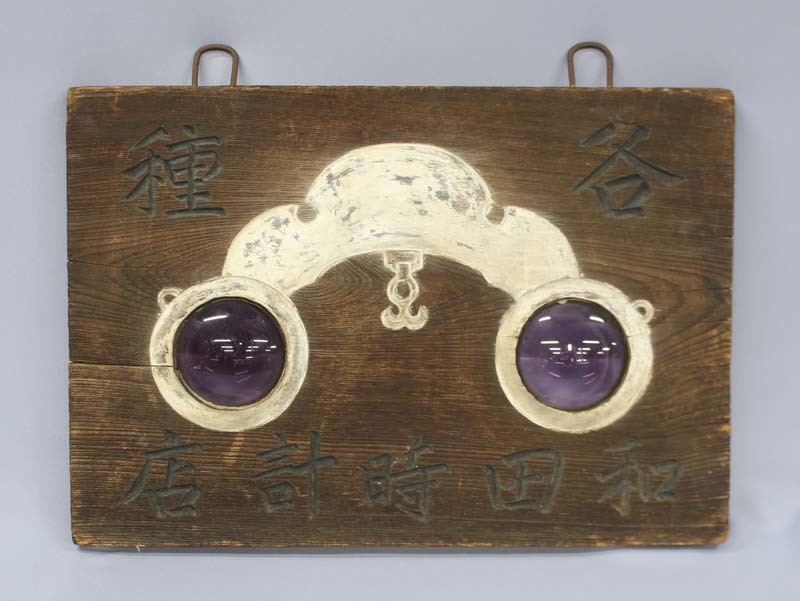701 A.D., first time shop signs are mentioned in Japanese law. It became a legal requirement to display the name of the shop and what kind of items or service it dealt in, with one line of text (on cloth). The entire law itself is merely one line of text: 凡市毎律立標題行名. 

Later on the customs regarding store signs evolved gradually, from cloth to simple bamboo sticks with writing to properly carved wooden slabs. We are now at the 17th century and shop signs have peaked in both utility and aesthetics. In wide streets, roofed hanging signs... 

...or if you had limited space, the roof mounted wooden sign boards were commonly used. For businesses open after dark, lighted signs were essential. You can see all types of shop signs in this photo of a replica street with a representative collection of period signs. 

The evolution of shop signs never displaced the older types of signs though, they merely added to them. Here's a thread on the noren, the oldest kind of shop sign, which are still in everyday use in hundreds of thousands of businesses in Japan.
https://twitter.com/wrathofgnon/status/1105294278018818048?s=20
Even market stalls, temporary food stalls or pop-up bars needed to have their "shop signs." They commonly used noborikanban or hatakanban, like these, first from 1852 and second from 2020: two rather ugly noborikanban advertising a digital payment system and shopping points. 



Some shops made eye catching signs in the shape of what they were selling. Here's a fan (the sign itself is huge) shop, a pharmacist (in folklore disease was brought in by demons), an optician and a wig maker or hairdresser. 







Then as now shop keepers put up signs to amuse potential customers. A common pun-sign was the bow and arrow, representing public baths, because the term shooting an arrow sound roughly similar to entering hot water in Japanese. It was later replaced by the now common ゆ sign. 

• • •
Missing some Tweet in this thread? You can try to
force a refresh




































